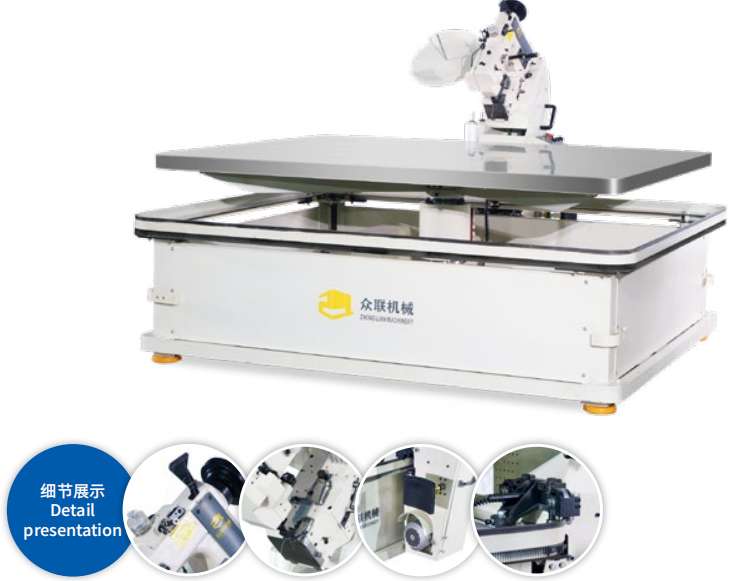
Nothing is more frustrating than a quilting machine that keeps skipping stitches in the middle of production.
To solve the jumper issue in a quilting machine, I always start by checking thread tension, inspecting the needle, adjusting settings, and keeping the machine clean.
This article outlines the 9 key causes and solutions I rely on to keep stitching smooth, continuous, and professional in every production batch.
What causes jumper issues in a quilting machine?

Skipped stitches don’t just appear—they’re triggered by something out of balance in the machine setup.
Jumper issues are often caused by improper thread tension, wrong needle choice, incompatible fabric, or dirty machine parts.
In my experience, these problems often come down to simple checks that many operators overlook when they’re in a rush. Let me explain each of them in more detail below.
How do I check and adjust thread tension properly?
When the thread tension is off, even a perfect machine will start skipping stitches.
Balanced upper and lower thread tension is essential for forming complete, even stitches.
To correct tension:
- First, I test with a piece of scrap fabric
- I adjust the tension dial on top until both top and bottom threads meet in the fabric center
- I always refer to the machine’s manual for tension ranges by fabric type
Small changes make a big difference—one quarter-turn can stop a jumper issue completely.
Why is choosing the right needle and thread important?
A mismatched needle and thread combo can silently sabotage your stitch quality.
Using the wrong needle size or thread type often causes the machine to miss stitches or produce uneven tension.
For example:
| Fabric Type | Recommended Needle | Ideal Thread Type |
|---|---|---|
| Quilting cotton | Size 80/12 sharp | 100% cotton 40wt |
| Stretch knits | Ballpoint 75/11 | Polyester 50wt |
| Heavy denim | Denim 100/16 | Heavy-duty polyester |
I always test before production. That way I avoid wasting fabric or time.
When should I replace the needle?
Even a slightly bent or dull needle can cause jumpers.
I replace my needle after every 8 hours of stitching or at the first sign of stitch skipping.
Visual checks I do:
- Is the needle tip bent?
- Is it scratching the fabric?
- Does it sound different during sewing?
Keeping a fresh needle on hand is one of the cheapest ways to avoid jumper issues.
What’s the best way to handle the fabric?
When fabric moves during stitching, your stitches won’t land where they should.
Proper fabric tension, hooping, or clamping helps prevent jumpers, especially on soft or stretch materials.
What I always do:
- Use stabilizer for thin or stretchy fabrics
- Avoid pulling fabric while stitching
- Pre-press materials to remove wrinkles
Let the machine feed the fabric naturally—resisting the urge to pull reduces misalignment.
How do I maintain a clean quilting machine?
Lint and dust build-up is like sugar in your gas tank—it gums up everything.
Regular cleaning of the bobbin area, feed dogs, and needle plate keeps the machine from skipping.
I clean:
- After every 4 hours of work
- Especially around the bobbin case
- Using a soft brush or compressed air
Bonus tip: Oil the machine as recommended. Dry parts = noisy operation = more skipped stitches.
What settings should I adjust to stop jumpers?
Wrong stitch length or speed can easily throw off your tension and stitch consistency.
I adjust my stitch length to 2.5–3.0 mm for standard quilting and reduce speed when working with thick layers.
Here’s a simple chart I follow:
| Fabric Type | Stitch Length | Machine Speed |
|---|---|---|
| Standard cotton | 2.5 mm | Medium |
| Multiple layers | 3.0 mm | Slow |
| Fine silk or knits | 1.8–2.0 mm | Medium-slow |
Always do a test before committing to the full piece. It’s worth the time.
Why should I test on scrap fabric first?
Starting on your real quilt without testing is a recipe for wasted work.
Testing lets me catch tension problems, needle issues, or speed mismatches before they ruin a good quilt.
I usually:
- Test 4–5 rows on similar fabric
- Watch for any uneven stitches
- Try different thread types if needed
This one habit has saved me countless headaches.
Do high-quality materials really reduce jumper problems?
Yes—cheaper materials save money upfront but cost more later in problems.
Better thread glides more smoothly, and quality needles stay sharp longer.
I always use:
- Branded needles (Schmetz, Organ)
- High-quality quilting thread (Aurifil, Gutermann)
- Brushed cotton or prewashed fabrics
Cheap thread tends to fray or break, which directly leads to skipped stitches.
Conclusion
Solving jumper problems is all about paying attention to the small things—tension, needles, fabric prep, and cleaning. Master these, and your quilting machine will run smooth and quiet.
